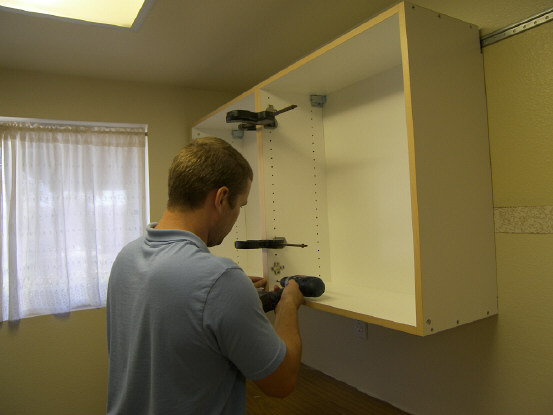Question
Many craftsmen on WOODWEB have said that frameless installation is more difficult than FF. Is this mostly true, or are there any methods that can make them as easy, if not more so, as FF to install?
Forum Responses
(Cabinet and Millwork Installation Forum)
From contributor M:
I have installed many FF and frameless. I don't think it's harder or easier, itís just different. The biggest thing is that with frameless it is easier to line up your stiles as oppose to FF. But FF is more forgiven when you have a wall that is not so flat. Other than that it's pretty much the same. It may be a little heavier with the frameless due to particle/MDF construction but there are a lot of FF with particle board.
As for putting the next cab, I find it easier to connect them together, then secure to the wall. With an out of level ceiling, it's probably best to create a shadow line. Similar to putting a piece of wood, flat on top of the cabinets and then putting a piece of molding at the very top. You need to be creative about this because there so many ways to do this. But it will never be perfect. Try to work with the problem, not against it.
As for molding, anything is possible. Most trim, like crown molding is nailed from the top. If you can't access the top, you can always secure it from inside the cabinet. Or there are different molding that can be applied like a FF. Most of the time you would need to put a nailer on top of the cabinets (before putting them up) and then face nail the molding. Appling molding on frameless has been posted here before. You could do some research and get some other ways of doing that.

The best advice is to get a good saw and line drill before taking the plunge. You want to keep an eye on the squareness of doors and fronts, they have to be really perfect. Face frame cabinets can get away with a lot of slop, including the installation. Frameless have to be nearly perfect or the doors won't line up. One plus for consumers is that the appliances have to be level, which is always a good thing.
2. You don't have to build face frames and have all the concomitant hassle in trying attach these face frames to your boxes in a sanitary way and finishing them without getting overspray into the box interiors (probably one of the biggest pains in cabinet making).
3. The obvious - you utilize space better.
4. No furring out for drawer hardware.
Frame easier:
1. You don't have to use scribe strips at wall edges, you just scribe the face frame.
2. Long stiles, like on pantries, are stiffened by the face frame so you don't have to worry about roll outs bowing out the cabinet end.
3. The fronts of your boxes stay pretty square when installing (not just the backs as with frameless).
4. You already have a wide rail up at the ceiling to land your crown molding on which hides the fact that your crown waves with the ceiling. With frameless, you have to add a "baseboard" for this purpose.
5. Most important, you can regale your customers about how you do things the time-honored, rock-solid, old-time way.